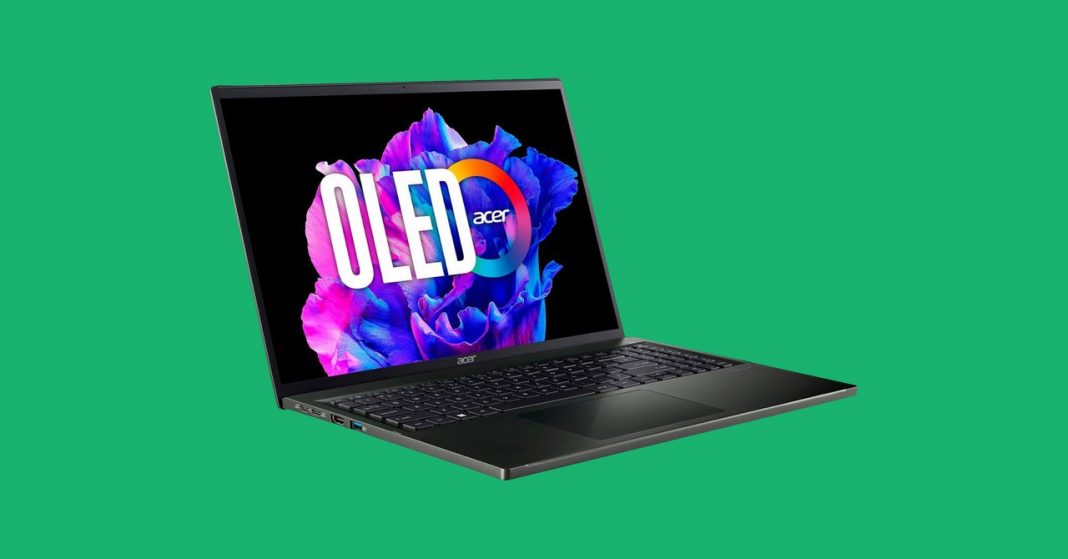Want a nice, big laptop at an obtainable price? The Acer Swift Edge 16 doesn’t check off all the boxes, but it has enough going for it to earn a cautious recommendation for most users in the market for something more spacious and powerful than the typical ultralight Windows laptop.
While Acer hasn’t always been a design leader, the chassis here looks great—a black monolith that’s just 18 millimeters thick (with feet) and weighs 2.7 pounds. But it’s the screen that is the standout, or at least it’s supposed to be: 16 inches—no touchscreen, take note—with an expansive 3,200 x 2,000-pixel resolution. That’s a 16:10 aspect ratio if you’re not good at math. The ultra-glossy OLED screen might be divisive—it’s so shiny that it can effectively double as a mirror whether it’s off or on—but its brightness rests on the high side (not eye-searingly bright), and it won’t draw any complaints.
Photograph: Acer
That 16-inch size means the chassis has enough room for a keyboard that features a slightly squished numeric keypad as well as a spacious, responsive touchpad. The keyboard action is unfortunately rather mushy. Sustained touch-typing just doesn’t feel all that great.
On the performance front, you’re getting a slightly mixed bag, but mostly a good deal across the board. Powered by a 3.3-GHz AMD Ryzen 7 7840U CPU and its companion Radeon 780M integrated graphics with 16 GB of RAM, benchmark scores aren’t blow-the-doors-off great, but they are good enough to put it within striking distance of higher-end machines.
In general apps, scores are almost on par with laptops like the Lenovo Slim Pro 9i, and while graphics-related performance is predictably much less impressive than on machines with a discrete graphics card, there’s enough of a boost over lower-end devices to be noticeable. It’s possible to enjoy some light gaming, though it’s not always a breathtaking experience. Surprisingly, I achieved strong scores on the Cinebench benchmark, a rendering-based test that tends to stress GPUs pretty hard. I never encountered any issues with stability, though occasionally there was some odd, serious lag that lasted several seconds before apps launched.
Battery life is solid, offering more than eight and a half hours of run time on a full-screen YouTube playback test. When plugged in, I found that the Swift’s fan tends to run quite a bit during even moderate loads, but the fan is quiet, so it’s not much of a nuisance. On the flip side, the Swift’s speakers are soft and in desperate need of a boost. Even at max volume, I could barely make out the dialog in a movie with the laptop sitting just 3 feet away.
Photograph: Acer
Expansion ports are fairly standard, including two full-size USB-A ports, two USB-C ports (both support USB 4; one is used for charging), an HDMI out, and a microSD card slot. The power button also includes a built-in fingerprint sensor.
This is a well-rounded machine that attempts to thread the needle in balancing performance and price, and for the most part, it does so well. An excellent point of comparison with this machine is the LG Gram SuperSlim, which I reviewed a few months ago. The LG has a similar design and thickness but has generally beefier specs. It’s half a pound lighter than the Acer but almost twice the price—at least while the Acer is on its current sale of $250 off its normal $1,300 MSRP. Neither is a perfect PC, but both are worth considering if you need a larger screen but still want to minimize the overall load in your bag.
